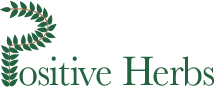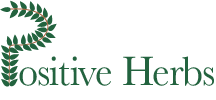Ointments, Technical notes,
The history + the what,
why and how of hand made making
01/07/17………………..We build OINTMENTS WITH NO MINERAL CONTENT, THAT DO THE SAME JOB AS THOSE THAT CONTAIN MINERAL CONTENT, AND ARE SAFER………………………………….
24/10/15. Well here is something very useful in making ointment, a friend has bees that collect nectar from oil seed rape plants……………. and it sets very well ( becoming very smooth- but not crystallized like some honeys) and really helps in the setting of the ointment , and really improves the finish and has a semi gloss cut. I have tried it out on a remake on one of our ointments – Roman Army ointment, (so needed to be robust., because it was used by soldiers). The finish is quite superior and lasts longer………………………………..so now you know.
.
Ointments have been around in one form or another for about two and a half thousand years. Some very old ointments were built into animal fat such as goose grease…….The herbs had to be infused in the animal fat, there was quite a lot of heat and stirring required and pressing out to achieve the ointment, the big problem was storage and how long before it went off. When an old fashioned ointment goes off, you can really smell it. + the shelf life was quite short
Then they used salt compounds such as SLS etc, which improved the smell, the texture and finally the shelf life. BUT some of the salt compounds can cause skin irritation, that is why they are now not so popular.
Modern mass produced ointments tend to be produced with Petroleum based products, this worries me over the long term (always read the ingredient label and be informed). There are some very clever waxes and oils that can be used instead, which are much safer in the long term, but more expensive
But We now use plant materials and fractions and believe that this is more safe.
The mastery of ointment making is to understand the balance required to blend waxes, oils and water soluble plant extracts with the use of an emulsifier to achieve a smooth uniform ointment that is stickable to the skin, to fix the plant active in place. It comes down to understanding balance and fully understanding ingredients.
Waxes to consider ;- Coconut solids, Shea nut wax, Cocoa butter, Mango oil solid and butter, Palm (incuding Red palm) and Soya waxes and fractions. Each of each of these has a different melting points , so allowing different applications and uses, there are many other waxes of personal choice, that can have varied uses (for alteration of eutectic structure/stability, or both) in applicational use, in different environmental conditions.
I must admit that certain ointments stay popular with our patients, such as Russian, Larcal (North American Indian), Hypericum and Calendula and both as singles, drawing ointments, Ginger and Sweet Birch and quite a few old fashioned preparations that have been in use over the last 200 years. But nowadays a lot of companies and specialist makers just are not interested or do not have the expertise any longer. So with time a lot of ointments are going to disappear, some of this will have been brought on by the implementation of the 2012 UK/ EU Regulations and THR LICENSING, as some small companies just cannot afford the Licence costs and all of the extra production implications (+ RATIONALISING), because the selling of unlicensed FINISHED PRODUCT is now prohibited.
I have been making Honey and Calendula ointment again, it was used by soldiers in the Roman Army with great effect. Being it has a zero water content – it is really stable and works in a very robust manner. Another thing the Romans gave us………………….
When lecturing, I try to get those interested in making ointments to understand that you really need to be in the right frame of mind , the “that will do” attitude never achieves the best results. Passion and interest are the best way to build the best ointments or creams. With a reminder of the great masters comment,”you never know until you really try, then you really know. – Lao Tzu.

